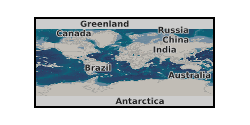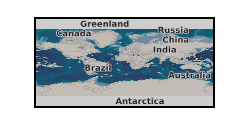Electron microscopy
Type of resources
Topics
Keywords
Contact for the resource
Provided by
Years
Formats
Representation types
Update frequencies
Scale
-

Modal mineralogy data of iceberg-rafted debris deposited at IODP Site U1538 in the Scotia Sea 1.2 million years ago based on QEMSCAN® analyses, which infer minerals from chemistry
-

Data has been recorded during triaxial rock deformation experiments where Lanhelin granite samples were subjected to dynamic and half-controlled shear failure. The data consists of mechanical data (load, displacement, confining pressure, strain gauge data), ultrasonic data (AE source locations and arrival times, sensor locations, arrival times of active acoustic surveys), and scanning electron microscope images of the samples after shear failure. Dataset contains all data necessary to evaluate the results presented in the paper entitled: 'Off-fault damage characterisation during and after experimental quasi-static and dynamic rupture in crystal rock from laboratory P-wave tomography and microstructures' by Aben, Brantut, and Mitchell, Journal of Geophysical Research: Solid Earth.
-

The dataset contains information on the crystallographic orientation and on the grain size of minerals in the brittle-viscous shear zones. The methodology used to generate it is polarized light microscopy, scanning electron microscopy (SEM) and electron backscatter diffraction (EBSD)
-

Porosity of core samples SSK111464 (sandstone) and SSK111465 (shale) calculated using backscatter electron SEM images of carbon coated thin sections processed in ImageJ Fiji software. 85 images of SSK111464 (sandstone) used and 74 images of SSK111465 (shale) at various magnifications. Core samples from UKGEOS Glasgow Observatory, borehole GGC01. Samples and data are derived from the UK Geoenergy Observatories Programme funded by the UKRI Natural Environment Research Council and delivered by the British Geological Survey.
-

As an integral part of the investigations carried out at Sellafield, and to a lesser extent for the Dounreay boreholes, the cores from the boreholes were systematically examined by geologists and samples selected for detailed petrographic analysis. Thin sections were prepared from many of these samples. Some of the samples were then prepared for analysis using X-ray fluorescence, X-ray diffraction or scanning electron microscopy. Samples containing fluid inclusions were prepared as doubly polished fluid inclusion wafers. Thin sections were prepared from soil materials obtained from the investigations of the Quaternary deposits. Particular attention was given to samples of the mineralisation that was identified in the formations at Sellafield. In addition to the samples from the boreholes, there are also some samples obtained from surface exposures that were examined during the regional surveys. The samples and sections have been catalogued and incorporated into the national collection by the British Geological Survey. The ownership of NIREX (Nuclear Industry Radioactive Waste Executive) was transferred from the nuclear industry to the UK Government departments DEFRA and DTI in April 2005, and then to the UK's Nuclear Decommissioning Authority (NDA) in November 2006.
-

EngD thesis describing experiments carried out using a variety of sandstones. This thesis investigates the microbial response to 10 ppm oxygen and 100ppm oxygen in experiments representing deep saline aquifer conditions. All experiments were conducted using sandstone, artificial groundwater and a microbial community designed to represent conditions found within deep saline aquifers. A microbial community, containing sulphate reducing bacteria, was isolated and identified from sandstone samples and then used in the experiments. The experiments were batch microcosms, a high pressure bioreactor and column flow experiments. Analyses of these experiments were conducted through gas analysis, water chemistry and DNA analysis from microbial communities.
-

This dataset comprises X-ray tomography image stacks, label files, and vector matrices containing 3D location coordinates of velocity distributions derived from permeability simulations for igneous mushy samples. The X-ray tomography images have spatial resolutions ranging from 3.5 to 56 µm, providing detailed 3D representations of the rock samples. The data were collected with samples from four distinct locations: Brandur (Iceland), Avellino (Italy), K?lauea Iki (Hawaii, USA), and Saint Kitts (St. Kitts and Nevis). Additionally, the dataset includes electron microprobe analyses of plagioclase and amphibole minerals from Saint Kitts. The primary purpose of this dataset is to support research into volcanic processes, rock sample analysis, and permeability simulations in igneous cumulate and plutonic rocks. It is particularly useful for geologists, volcanologists, and researchers in material science and structural geology. Each sample in the dataset is organised into a dedicated folder containing the following X-ray tomography image stacks (in a separate folder named as the sample), label files (.am files named using the sample name as a prefix), binary images of the connected plutonic matrices (.am files with the suffix “Axis-Connectivity”), vector matrices with 3D location coordinates (“PotentialZ” for the pressure field, “VelocityZ” for the velocity field), a DOCX file with the metadata for the sample such as voxel size and the number of layers for each label, and, where applicable, a subfolder with SEM images.
 NERC Data Catalogue Service
NERC Data Catalogue Service